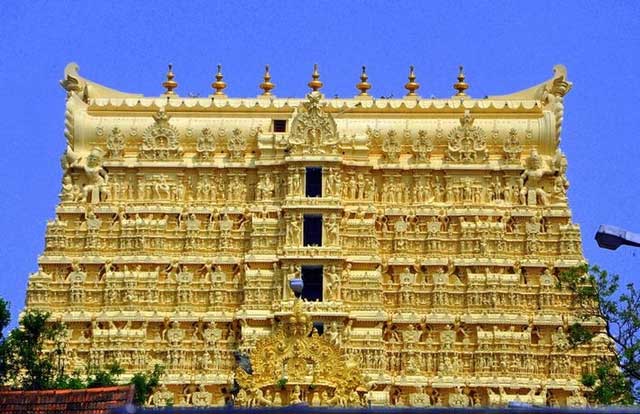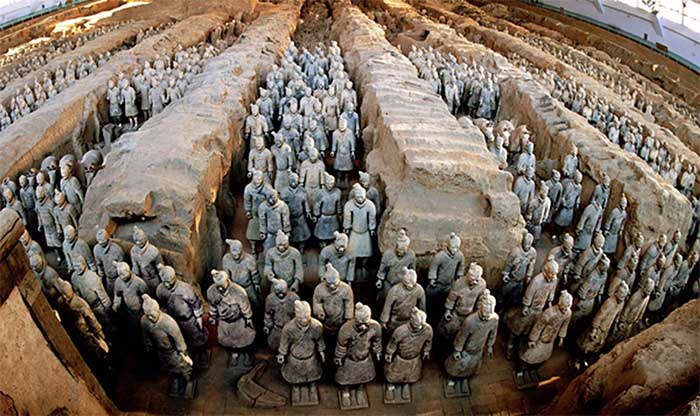The gates in architectural works, especially in landmarks like temples, hold significant meanings. They are not just entrances and exits but also barriers that ensure safety. In ancient times, the development of cities was inseparable from the existence of city gates. When the gates were closed, the city became a stronghold against external threats, whether from enemy invasions or natural disasters.
However, some doors seem different from others. They appear not to exist for opening. These doors are hidden in mysterious places, leading to undefined areas and seemingly requiring special keys or passwords to unlock. These doors are not meant for access but carry a deeper significance.
Globally, there are three doors dubbed “impossible to open”, and indeed, later generations have respected them and refrained from trying to uncover the secrets within.
Taj Mahal

The Taj Mahal was built by Shah Jahan of the Mughal dynasty in memory of his beloved wife.
The first door is the famous Taj Mahal in India. The Taj Mahal is an iconic landmark in India and is recognized as one of the seven wonders of the world. It was built by Shah Jahan of the Mughal dynasty to commemorate his beloved wife. The king was deeply saddened by her death, prompting him to mobilize thousands of workers and take over ten years to construct the Taj Mahal.
The splendor of the Taj Mahal is unparalleled. In his desire to preserve his love for his wife forever, Shah Jahan built this mausoleum measuring 508 meters in length and 350 meters in width. For this purpose, he nearly exhausted the wealth of the dynasty.
Today, the Taj Mahal is a national treasure of India, and no one is allowed to open its main gate. Legend has it that the Taj Mahal holds the remains of Shah Jahan and his queens, as well as endless treasures.
Padmanabhaswamy Temple

Deep within the temple are 6 sealed chambers.
In Kerala, southern India, there is a mysterious and strange temple called Padmanabhaswamy, which has long been a sacred site for worship. Deep within the temple are six sealed chambers. When later generations opened one of these secret rooms, they were overwhelmed, as these chambers contained treasures. Preliminary estimates by archaeologists suggest these treasures could be worth over $10 billion. However, the people of India do not utilize these treasures and continue to keep them within the temple.
While the secret rooms have been opened and a large quantity of treasures and artifacts have been discovered, the sixth door has never been opened. Partly because the first five secret rooms kept archaeologists busy, leaving them with no time to open the sixth room. On the other hand, the opening of the final room has been postponed due to methodological difficulties.
The Tomb of Qin Shi Huang

The Terracotta Army in the tomb of Qin Shi Huang.
In China—a country with a long-standing culture—the “impossible to open” door is none other than the Tomb of Qin Shi Huang. Since the discovery of the Tomb of Qin Shi Huang, there has been immense curiosity about the cultural relics inside, yet opening the tomb has proven to be extremely challenging.
Construction of the Tomb of Qin Shi Huang began in the first year of his reign and took 39 years to complete. During this time, the Qin state unified the realm, making the tomb far more extravagant than one could imagine.
According to an archaeological survey in 1962, the area of the Tomb of Qin Shi Huang is at least over 56 km2. This is not just an isolated tomb but also a vast necropolis with more than 400 tombs scattered around, representing a colossal archaeological discovery.
The terracotta warriors and horses guarding the Tomb of Qin Shi Huang have captured global attention. Although experts have definitively identified their general structure using modern tools, they have still made mistakes during excavation and research, causing the Terracotta Army to lose its color. To avoid similar errors with the Tomb of Qin Shi Huang, experts hesitate to open it hastily.
Another issue is that the Tomb of Qin Shi Huang contains a substantial amount of mercury, which is extremely toxic. Over the years, much of the mercury in the tomb has evaporated, and nearby plants have produced toxic fruits. These difficulties and risks have rendered the Tomb of Qin Shi Huang a “door” that cannot be easily opened, and mankind remains infinitely curious about the secrets within.


















































